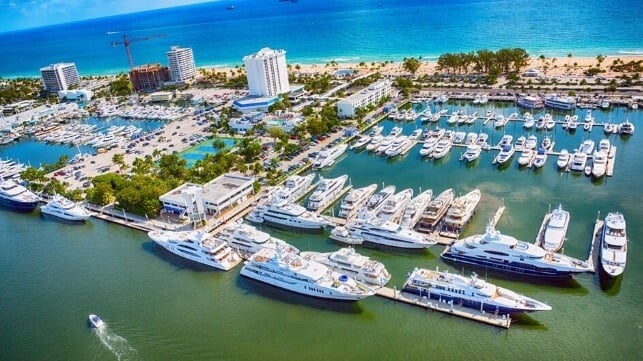Study: Yachts are Spreading Termites Around the World

Infested boats are aiding the transportation of invasive termites across the globe, spreading insect species that cause economic damages running into the billions of dollars, a new study reveals.
The study by researchers at the University of Florida concludes that recreational vessels - yachts, cabin cruisers, sailboats and similar personal craft - have become the main means of transportation for termite stowaways.
Aided by maritime transportation, the damage caused by the invasive termite species like the Formosan subterranean, Asian subterranean and West Indian drywood is significant and continues to rise. Since 2010, termite infestations have been linked to an annual economic impact exceeding $40 billion globally, with the Formosan subterranean alone causing an estimated $20 to $30 billion in damage.
Although historically termites have been suspected of being able to travel long distances on floating debris after natural disasters like hurricanes, tsunamis or landslides, private boats have made it much easier for termites to spread. The fact that recreational boats are not routinely checked for termites has allowed small vessels to become mobile breeding grounds for colonies, with the end result being unchecked spread.
“Instead of a few termites accidentally crossing oceans once in a million years, we now have a high probability of them traveling on infested boats every year, dramatically increasing their spread potential,” said Thomas Chouvenc, lead researcher.
In the study published in the ScienceDirect journal, researchers summarized a combination of field surveys, genetic analysis and historical data to make a compelling case that boats, particularly those used for recreation, are a major cause for the spread of termites across continents. In fact, owing to the fact that termite pests are excellent at associating with human activity, boats provide an ideal environment for them to travel far beyond their native habitats.
The study states that most termites remain within their native regions, unable to thrive in urban environments. However, the species responsible for the most damage have adapted to urban climates.
Once an infestation is established in a boat, it can easily spread onshore. The termites, often carried in hidden colonies aboard boats, can spread to other on shore regions when flying termites are attracted to city lights. Once colonies are established on land, the species continue to spread, creating new infestations in other boats and urban areas.
A case in point is South Florida, popularly known as the "yachting capital of the world," which has also become a hot spot for invasive termite species - thanks to the many discoveries of termite colonies in recreational boats.
Data by the National Marine Manufacturers Association show that Florida is the top state in the U.S when it comes to recreational boating, boasting more than one million registered boats with an annual economic impact of $31.3 billion.
“In Florida and many other tropical regions, the risk is high because recreational boating is so prevalent,” warned Chouvenc. “Boats in these areas are likely to be infested, but unless owners take proactive steps, the spread of termites will continue unchecked.”
By becoming the preferred means of transportation for termite stowaways, boats are aiding in their economic destruction - particularly for homeowners and businesses due to their tendencies to damage wood in structures and infest trees.
Chouvenc says that regular inspection of vessels for signs of infestation is one of the main ways to curb the spread of invasive termites.
